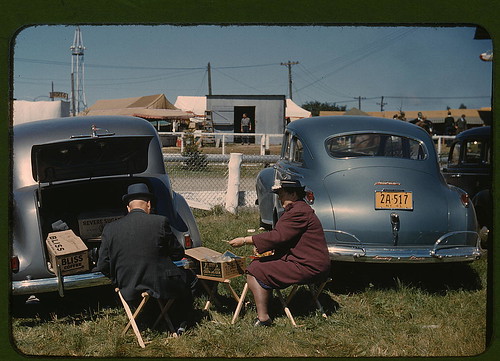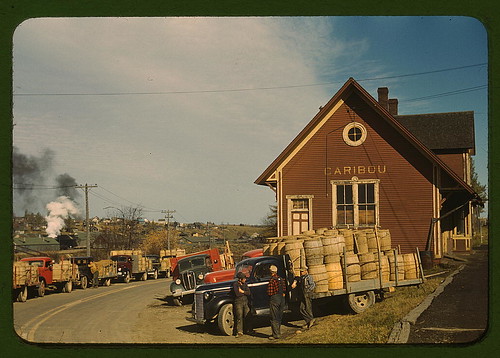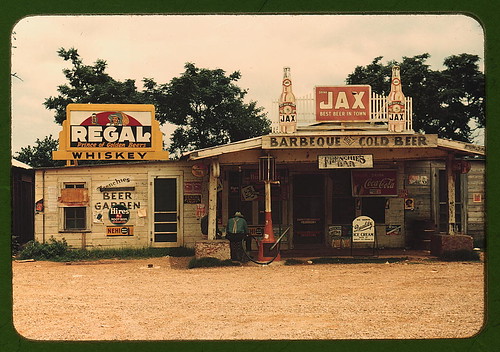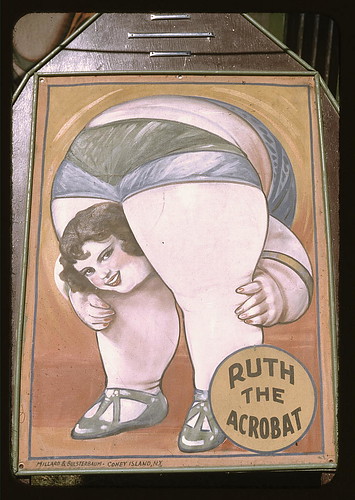General Discussion
Related: Editorials & Other Articles, Issue Forums, Alliance Forums, Region ForumsStunning and gorgeous color photos of the 1930s and 1940s from the @LibraryCongress



More: http://www.flickr.com/photos/library_of_congress/sets/72157603671370361/
WOW!

fishwax
(29,149 posts)I never get tired of looking at color pictures from that era.
![]()
Old and In the Way
(37,540 posts)JohnnyRingo
(18,672 posts)Only because we so seldom see color images before the '60s, and some people think color film hadn't been invented yet. Seeing these in full color really takes one there so much better than b&w.
Although color photography was around prior to 1903, the Lumière brothers, Auguste and Louis, patented the process in 1903 and developed the first color film in 1907. The French army was the primary source of color photos during the course of World War One
On edit: Notice the 1914 Renault truck with the radiator situated behind the engine. Ahh the French:



Hundreds more here:
http://www.worldwaronecolorphotos.com/index.html
Owlet
(1,248 posts)chalky
(3,297 posts)between 1909 and 1912.

I'm still amazed at the images.
http://www.boston.com/bigpicture/2010/08/russia_in_color_a_century_ago.html
JohnnyRingo
(18,672 posts)I think it's because were so used to seeing those times in b&w, and it's almost unnatural to see the colorful hues. I can't imagine what TV shows like "Leave It to Beaver" would be like in living color.
It seems to that so many of these pix are more crisp and warm than modern photography. Maybe it's like listening to either MP3s or vinyl records.
Thanx for that link, I need a distraction from this Republican Super Tuesday Hullabaloo Extravaganza on TV right now. I'm getting upset.
On edit, I don't know if you're aware of Shorpy. It's a 100 year old internet photo depository. A description of each photo is included. It's stark to see 10 year olds working in textile mills and factories:
http://www.shorpy.com/
HughBeaumont
(24,461 posts)HappyMe
(20,277 posts)Thanks.
ipfilter
(1,287 posts)It's nice to see pictures of the blue skies with no contrails.
Are_grits_groceries
(17,111 posts)
Kablooie
(18,645 posts)I am stunned.

Are_grits_groceries
(17,111 posts)DiverDave
(4,890 posts)pages and pages of images.
starroute
(12,977 posts)The three photos shown in the OP are actually atypical for having bright shades in them. You go to the Flickr site and start scrolling through and almost everything is neutral or drab. Clothes are mostly grey or brown. Buildings are dark red brick or white or grey siding. Cars are black. Even store windows are pretty monochromatic.
There's an occasional flash of red in Coke or other advertising signs. And the circus scenes in one series of shots had a bit more color in the posters -- though not apparently in the performers' clothes, which were mostly white.
But the full range of blues and purples and greens and pinks that we love to surround ourselves with today is completely missing. This is something that I think began to change in the 1950s -- at least, I was very aware as a child that the "old stuff" around the house, when it had color at all, tended to be in greyed-out shades of pink or light green, while the new stuff was far more vibrant.
Partly it was a result of plastic displacing wood and metal. Partly it may have been that the growing predominance of Technicolor movies -- and then color TV by the late 50s -- brought with it a fashion for vivid colors in clothing and set decoration. But I also have the feeling that there was something psychologically deeper about the shift, although I can't put my finger on what it was.